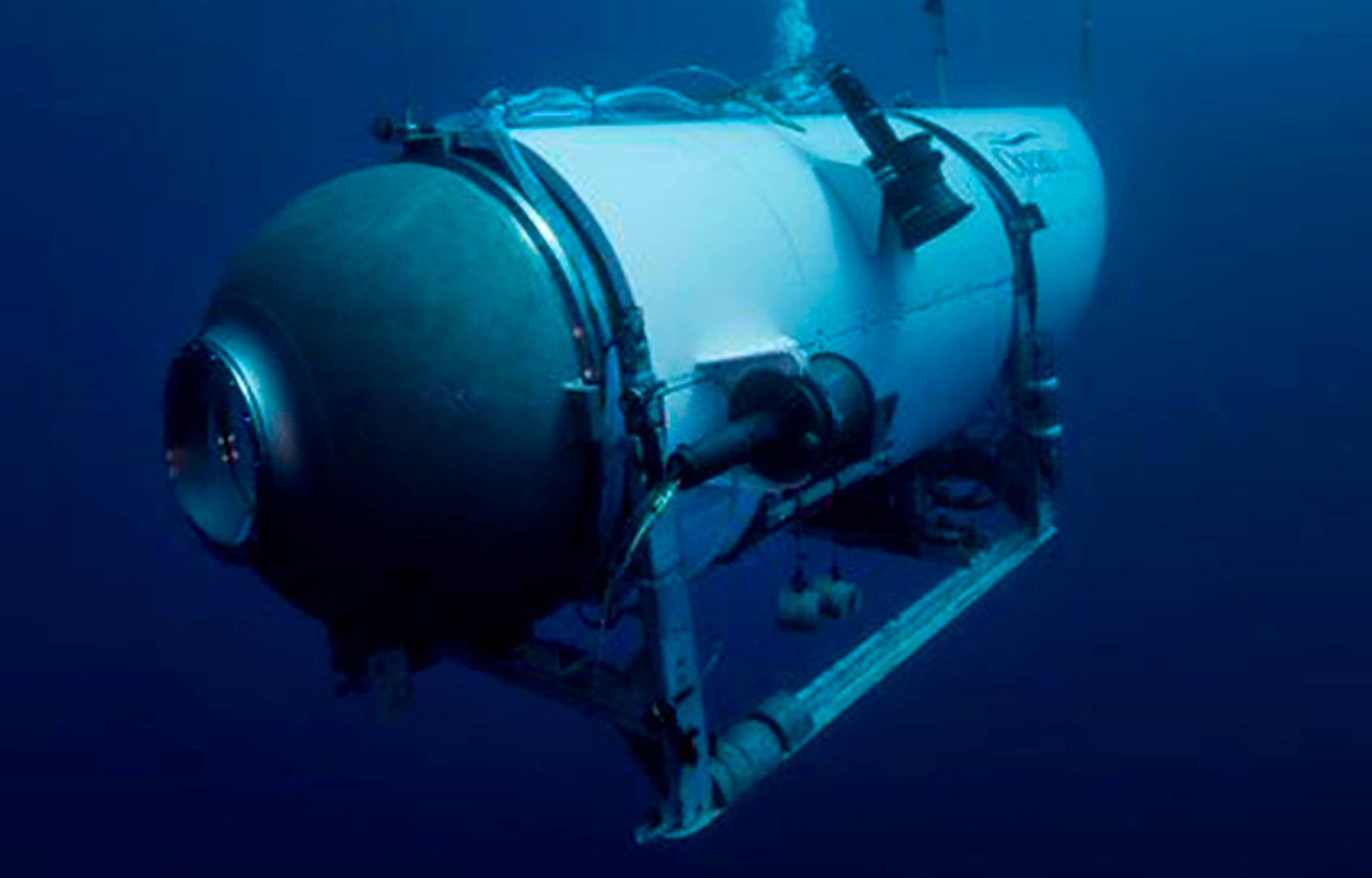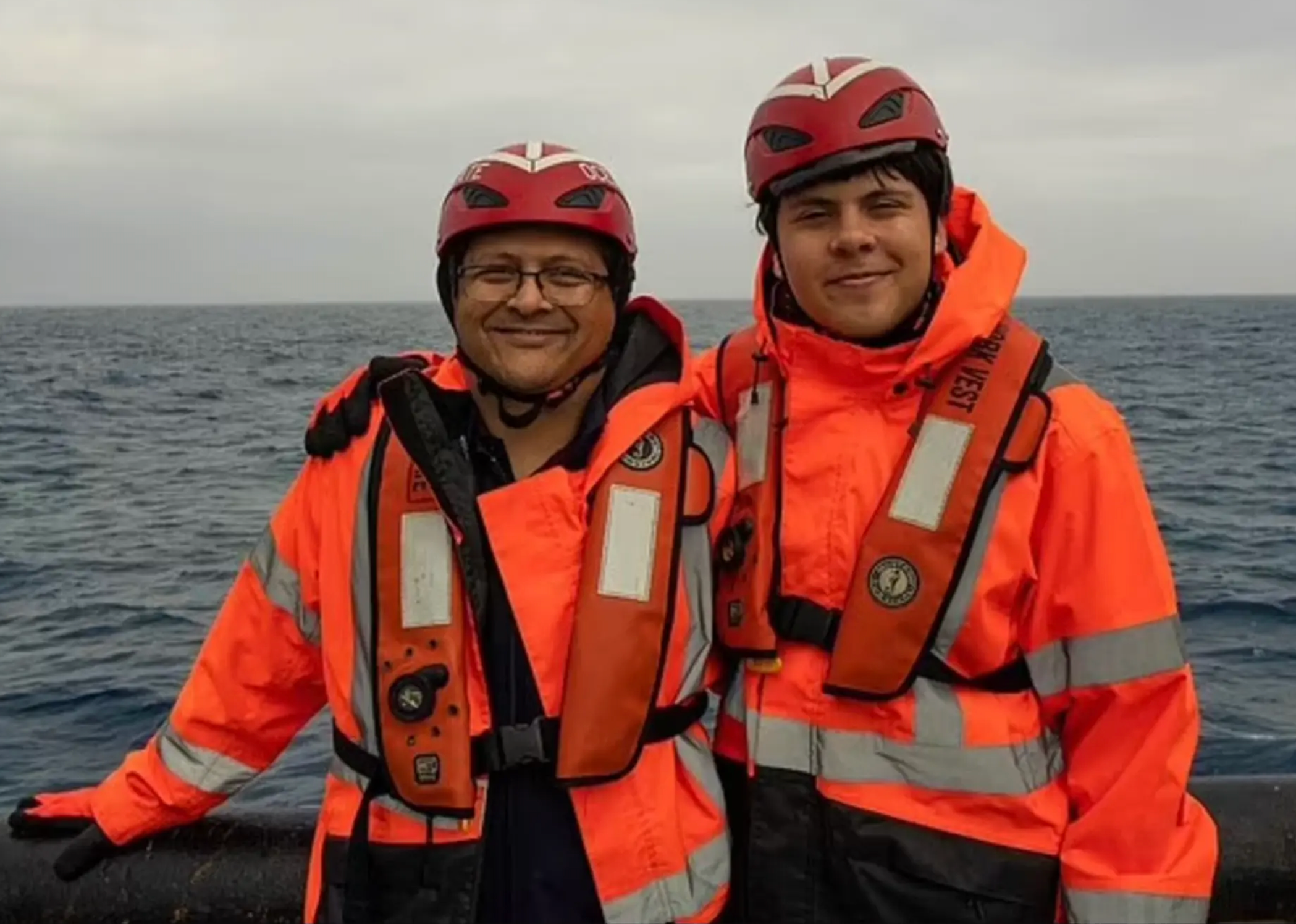Crew of doomed Titan sub knew they were going to die before implosion, lawsuit claims
The disaster was ‘directly due’ to OceanGate and its founder’s ‘persistent carelessness, recklessness and negligence,’ the complaint states
The family of a French explorer who died in the Titan submersible implosion has filed a $50m wrongful death lawsuit against the operator, claiming the crew suffered “terror and mental anguish” before disaster struck.
Paul Henri-Nargeolet’s family is asking for more than $50m in damages, accusing OceanGate, the company that owned and operated the beleaguered Titan submersible, and its founder of wrongful death, gross negligence, pre-death pain and suffering and mental anguish, and other counts. His family filed the suit in Washington state court on August 6.
Nargeolet, known as “Mr Titanic” for having participated in 37 dives to the Titanic wreckage site — “the most of any diver worldwide” — set out with five other crew members to explore the famous wreckage on June 18, 2023.
But the entire mission came to a shocking end when the vessel lost contact less than two hours into its voyage. The world watched as a search-and-rescue mission rushed to find the crew before the submersible’s 96-hour oxygen supply ran out.
The deaths that arose from the “catastrophic implosion” were “directly due” to the defendants’ “persistent carelessness, recklessness and negligence,” the complaint states.

The suit accuses OceanGate and its founder, 61-year-old Stockton Rush, of having “designed, constructed and operated” the submersible in almost every way “in a manner outside the norms of the diving community and industry.” This diversion from the standard was “driven by Rush’s apparent obsession with being remembered for ‘innovation’ alongside such luminaries as Steve Jobs and Elon Musk,” according to the suit.
The lawsuit claims that Rush, specifically, flouted rules of convention, ignored warnings from experts, and used atypical materials, the suit says. Instead, he prioritized promoting his reputation as an industry “disruptor.”
For example, while titanium is usually used for deep-sea exploration submersibles, Rush “believed that titanium was unnecessarily heavy” and opted for Titan’s hull to be made from carbon fiber, which “breaks down over time under pressure.” However, Rush acknowledged the “catastrophic failure where you have imperfections in the [carbon fiber] structure,” so he installed an acoustic safety system to detect problems.
The Titan traversed to the depth of the wreckage site only a few times before the mission — but these trips would have weakened the vessel’s “carbon-fiber hull and/or the connections and seals between disparate types of material,” the suit added.
Oceangate’s head of marine operations, “the employee ultimately most responsible for the safety of anyone sailing” on Titan, asked for a scan of the carbon fiber hull as part of a detailed safety report, causing Rush to become “infuriated.” The founder not only refused to conduct a scan, but after addressing the report, Rush fired the safety chief.
On top of this expert’s opinion, Rush heard warnings from other experts as well as from the Marine Technology Society, which sent a letter to OceanGate in 2018 stating that “the current ‘experimental’ approach adopted by OceanGate … could result in negative outcomes (from minor to catastrophic).” However, the suit states: “None of the warnings were heeded.”
The vessel was also never certified by the leading group DNV. Rush declined to seek DNV certification for Titan because he believed “it would be too difficult to ‘educate’ DNV personnel – who are by any measure world-class experts on the requirements and dangers of deep-sea diving – on the purported advantages of Titan’s ‘innovative’ design,” the complaint says.

The suit also states that crew members were required to sign a waiver — which “failed to disclose many key, relevant risk factors…regarding the design and operation of TITAN or the materials used in its construction.”
Despite his extensive knowledge of the ocean floor near the Titanic ship, the 77-year-old Nargeolet was never fully informed about the safety of the vessel, the suit says. “Neither Rush nor OceanGate ever fully or accurately disclosed all of the material facts regarding Titan’s design and construction…On the contrary, Rush and OceanGate actively fostered Nargeolet’s (and others’) false impressions about the safety and seaworthiness of the vessel”.

The worst happened. When the acoustic safety system’s alarm sounded, signaling the hull was “cracking under extreme pressure,” it prompted the pilot to release weight and attempt to abort the expedition.
The crew had no communications and likely would have had no power either. “Common sense dictates that the crew were well aware they were going to die, before dying,” the suit states.

“The crew may well have heard the carbon fiber’s crackling noise grow more intense as the weight of the water pressed on TITAN’s hull,” the filing says. “By experts’ reckoning, they would have continued to descend, in full knowledge of the vessel’s irreversible failures, experiencing terror and mental anguish prior to the Titan ultimately imploding.”
Aside from the Titan, no commercial manned submersible has ever suffered an implosion, the suit says.
Both Rush and Nargeolet died in the implosion, along with British explorer Hamish Harding, 58, UK-based Pakistani businessman Shahzada Dawood, 48, and his 19-year-old son Suleman.

Tony Buzbee, one of the lawyers for the family, said in a statement: “We are hopeful that through this lawsuit we can get answers for the family as to exactly how this happened, who all were involved, and how those involved could allow this to happen.”
In the immediate aftermath of the Titan tragedy, a so-called “log” detailing the crew’s final moments circulated the internet, suggesting that they were aware of the imminent implosion. But in June, Captain Jason Neubauer, chair of the Marine Board of Investigation (MBI), told the New York Times: “I’m confident it’s a false transcript.” Neubauer added that his team “found no evidence” that the crew had any awareness of their impending deaths.
The Independent has emailed a spokesperson for the MBI for further comment.
The US Coast Guard’s investigation into the catastrophe is ongoing. The agency is scheduled to hold a hearing about the disaster in September.
Join our commenting forum
Join thought-provoking conversations, follow other Independent readers and see their replies
Comments
Bookmark popover
Removed from bookmarks